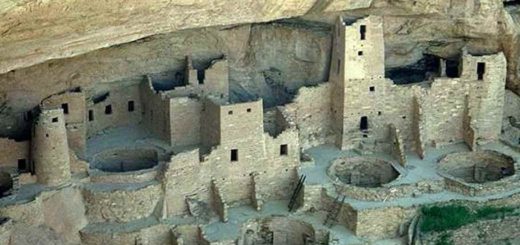Did Ancient Civilizations “Levitate” boulders into position and build massive monuments?

Is it wrong to think that great ancient civilizations like the ancient Egyptians, Olmec, Pre-Inca and Inca deciphered the secrets of ‘levitation’ and other technologies that have been labeled by today’s society as impossible, and mythological? And if they did, is it possible that they used these ‘forgotten technologies’ to erect some of the most incredible ancient constructions on our planet?
The idea that ancient civilizations around the globe were able to transport supermassive blocks of stones has captured the interest of authors, researchers, engineers and the general public for years.
How on Earth were ancient cultures that inhabited Earth thousands of years ago capable of moving blocks of stone that weigh 50, 70 or 100 tons?
Furthermore, how were they able to place these stones into position, and join them with even greater boulders with extreme precision?
Today, when engineers want to transport supermassive blocks of stone they need super machines. For us to move a 50-ton boulder we use a number of different tools. Cranes, Hydraulic jacks, steel beams and girders among other things are used today when builders have to move heavy boulders.
So how on Earth did the ancients who built sites like Puma Punku, Ollantaytambo, Baalbek, Teotihuacan and the Pyramids at Giza Plateau do it thousands of years ago?
If we take a look at Baalbek in Lebanon we will come across the Temple Of Jupiter which contains THREE of the LARGEST stones in the world. These boulders weigh a staggering 1,000 tons EACH. How did they move them?
Alright, let’s say they somehow managed to do that, but if we travel to Bolivia we will find the same thing over and over again. Puma Punku contains some of the most intricately cut, 100-ton blocks believed to have been crafted over 2000 years ago.
But Baalbek and Puma Punku aren’t the only sites on Earth that feature massive stones. If we travel to Africa we’ll notice that the Giza Plateau screams out mission impossible. The Great Pyramid of Giza consists of a staggering 2.3 million blocks. What’s even more mind-boggling is that the weight of the pyramid is estimated at 5,955,000 tons. Multiplied by 10^8 gives a reasonable estimate of the earth’s mass. Some of the largest granite stones are found in the ‘King’s’ Chamber and weigh between 25 to 80 tons each. These massive blocks of stones were transported from Aswan, over 800 kilometers away.
This engine has baffled experts, authors and the general public for decades.
Is it possible that our ancient ancestors knew the secrets of levitation? a technology that has since been lost in time and space?
Or was all of it done with a gigantic labor force?
Is it wrong to think that great ancient civilizations like the ancient Egyptians, Olmec, Pre-Inca and Inca deciphered the secrets of ‘levitation’ and other technologies that have been labeled by today’s society as impossible, and mythological?
And if they did, is it possible that they used these ‘forgotten technologies’ to erect some of the most incredible ancient constructions on our planet?
And if it wasn’t a lost technology, or if they did NOT find the secrets of ‘levitation’ how on Earth did they create supermassive monuments?
The obvious question is… How is it possible for a 10,000-year-old culture to move stones weighing more than 50 tons?
Curiously, all ancient sites that feature MASSIVE stones have one thing in common: there are stories, legends that say these were built by the Gods.
So hold on a sec… did the Gods literally come to Earth and move MASSIVE stones? Or is here something more to the story?
There are several ancient myths that speak of massive stones being moved into position with the help of sound. The power of sound helped levitate MASSIVE blocks of stones into position.
The legends of Stonehenge speak that of levitation and how the massive stones used in the construction of Stonehenge were transported from great distances with the help of levitation.
Curiously, it is said that ancient legends in Bolivia mention similar accounts when we take a look at the stories behind the construction of Puma Punku.
Even more interesting is the fact that according to Greek Historian Herodotus, the Egyptians were supposedly given knowledge from the ‘Gods’ on how to FLOAT massive limestone blocks of stone, in order to build the great pyramid of Giza.
Is everything related to sound?
How can sound help move objects? That’s science fiction, right? Not really. As technology moves forward so do the limits of what’s possible and not.
A Single-sided acoustic tractor beam has already been invented and in can TRAP and PULL an object using nothing but sound waves from one direction.
Here’s a video:
Furthermore, scientists from the University of Bristol have created a handheld device composed of an array of speakers that makes it possible for the holder of the device to focus sound waves and LEVITATE small pieces of light material.
Scientists at Argonne National Laboratory have discovered a way to use sound waves to levitate individual droplets of solutions containing different pharmaceuticals. While the connection between levitation and drug development may not be immediately apparent, a special relationship emerges at the molecular level. Read more here.
And if you are still not convinced as to why sound is so important and how much can be acheived with it take a look at this video:
Perhaps to find out how the ancients did it, and why sound was so important we need to focus on Archaeoacoustics—the use of acoustical study as a methodological approach within archaeology.
We know that sound was widely worshiped by different ancient cultures around the globe. Recent studies performed at Stonehenge have revealed that the megalithic blocks of stone were specifically positioned in order to cause SOUNDWAVE interference patterns—something similar to noise-canceling devices. This resulted in spots with total silence at various points around the monument.
Other monuments around the globe also respond to sound. If we take a look at the Chavin culture from ancient Peru we find curious details related to sound.
At the archaeological site of Chavin de Huantar, we find a set of structures and statues that produce a feline-like roar when ancient shell trumpets are played in their vicinity.
The same thing can be seen at the Pyramid of the Feathered Serpent in Chichen Itza, as the sound echoes mimic the cry of the quetzal a bird the Mayans believed was a messenger for their creator god Kukulkan.
However, there are countless other places that also respond to sound in peculiar ways.
One of those places is the Hypogeum of Ħal-Saflieni a Neolithic subterranean structure in Malta. The Hypogeum was discovered by accident in 1902 when workers cutting cisterns for a new housing development broke through its roof. Upon entering, archaeologists discovered over 7000 skeletons and some of them had extremely elongated skulls.
Studies performed inside the Hypogeum left experts baffled.
It is known that the Hypogeum was used in the Neolithic not only as a depository for bones but also as a shrine for ritual use. In a room known as the “Oracle Room” set in the second level of the hypogeum, we have been able to detect the presence of a strong resonance effect: a double resonance frequency at 70Hz and 114Hz. With a male voice tuned to these frequencies, it is possible to stimulate the resonance phenomenon throughout the hypogeum. It was further detected that percussion instruments can stimulate the resonance by their harmonics. Laboratory testing indicates that these frequencies have a strong effect on human brain activity. Since it is likely that the chambers served as centers for social or spiritual events, the resonance of the chamber cavities would have supported human ritual chanting and mystic consciousness. For more details check out Archaeoacoustic Analysis of the Ħal Saflieni Hypogeum in Malta.
Anyway, the fact is that the entire hypogeum resonates at the specific frequency of 110 hertz, something that you can literally feel on your body.
What if these specific acoustic properties present in various ancient sites are in fact remnants of something much larger that once existed on Earth?
What if certain frequencies and sounds are the key to finally unlocking the secrets of countless ancient cultures, and their ability to erect some of the most impressive monuments modern engineering cannot replicate?
Featured image by Softyrider62.
More from Sofyrider63 on DeviantArt here.



 Creators of mankind
Creators of mankind Description of “Tall white aliens”
Description of “Tall white aliens” Where they came from?
Where they came from? About hostile civilizations
About hostile civilizations The war for the Earth
The war for the Earth “Tall white aliens” about eternal life
“Tall white aliens” about eternal life Video: “Nordic aliens”
Video: “Nordic aliens” Aliens
Aliens Alien encounters
Alien encounters The aliens base
The aliens base UFO
UFO Technology UFO
Technology UFO Underground civilization
Underground civilization Ancient alien artifacts
Ancient alien artifacts Military and UFO
Military and UFO Mysteries and hypotheses
Mysteries and hypotheses Scientific facts
Scientific facts


















